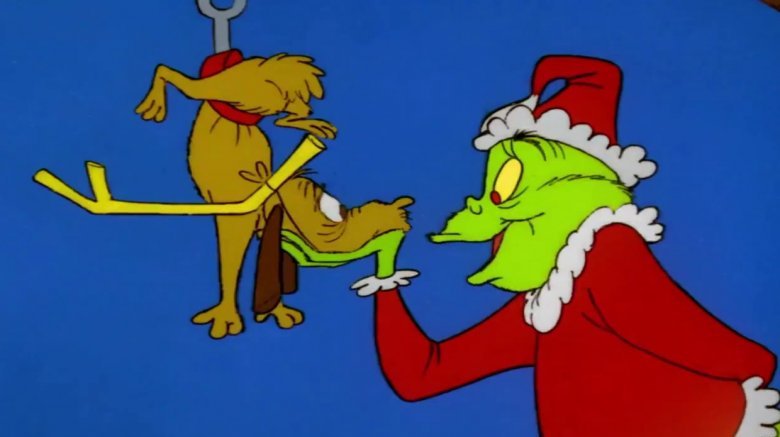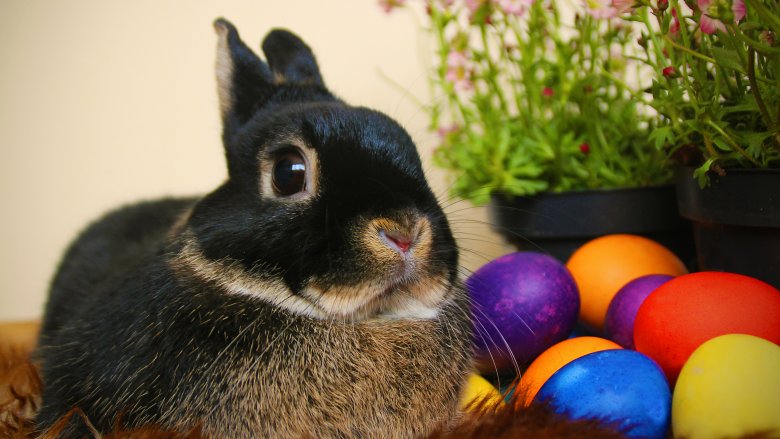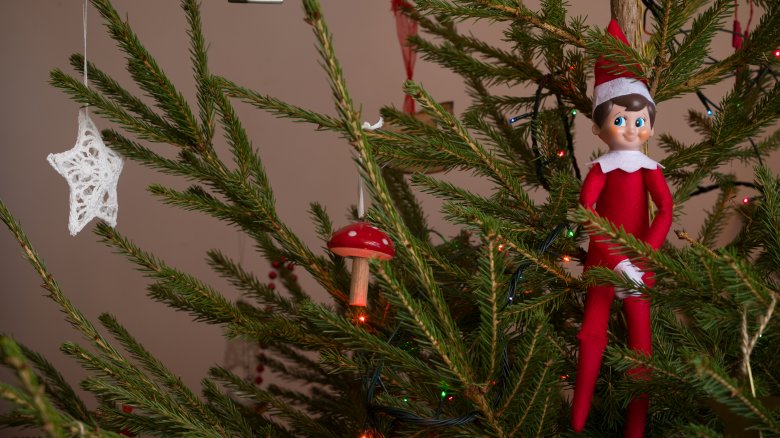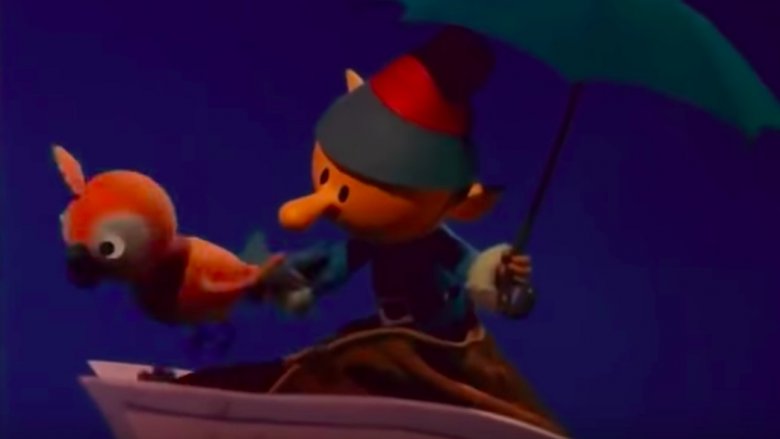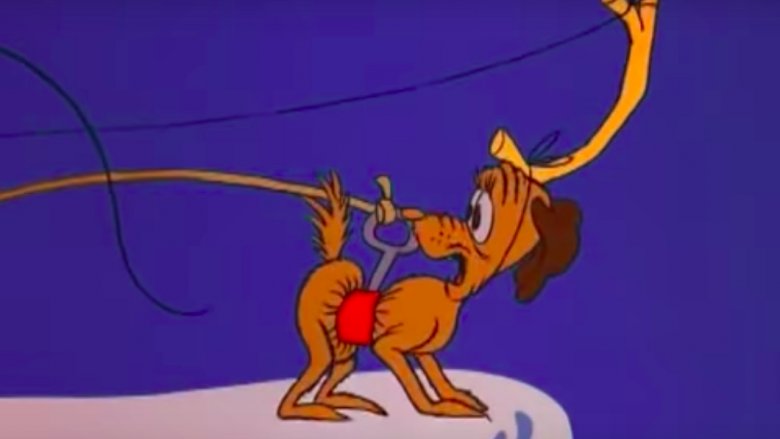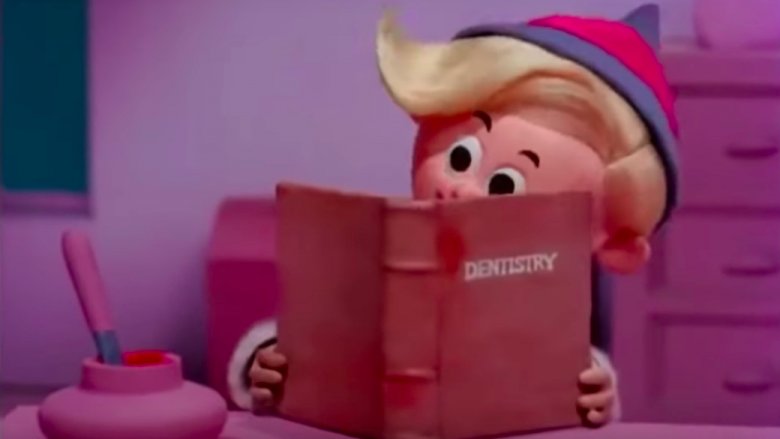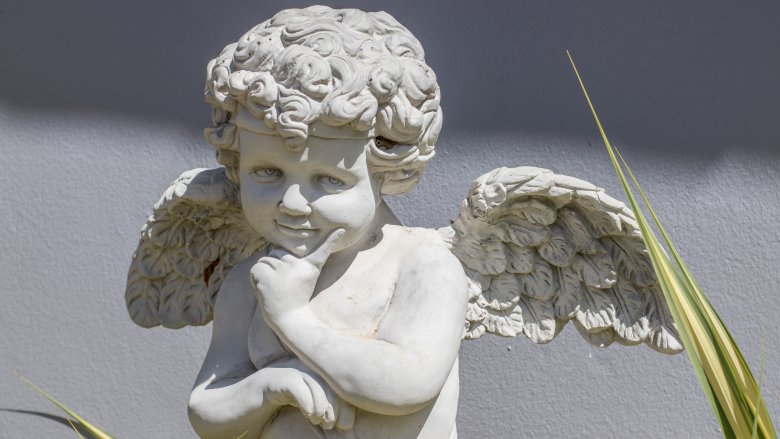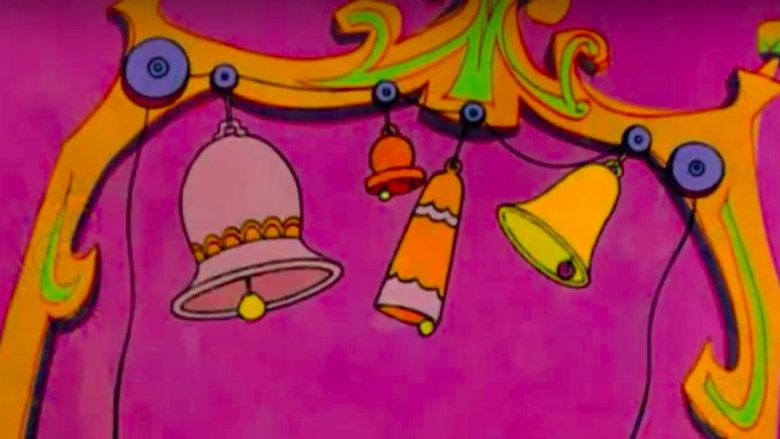Things About Holiday Characters Only Adults Notice
For children, magic is a big part of every holiday, except maybe President's Day because no matter how much we hype the whole George Washington and the cherry tree thing (which didn't happen) there really isn't anything that magical about an old guy in a weird white wig. Anyway, certain holidays just wouldn't be the same without some sort of magical person or animal who uses supernatural badassery to selflessly deliver holiday cheer, presents, and enough chocolate to start all the world's children down the inevitable path to Type 2 diabetes.
Holiday characters like Santa and the Easter bunny, and lesser characters like the Grinch and Rudolph are part of what makes the holidays special for kids — and for grown-ups, too, really, since who does not like to make a cup of hot cocoa and rewatch Rudolph the Red-Nosed Reindeer for like the billionth time even though we'd die of embarrassment if anyone actually caught us doing it? But as adults, we have the benefit (or perhaps the misfortune) of questioning stuff that kids just don't notice. If you've never personally wondered about any of these things, our apologies because you might never think of these holiday characters in quite the same way again.
There's something fishy going on at the North Pole
Santa's workshop must be massive. If the Atlantic's analysis is correct, there are roughly 526 million kids on Santa's list, and if each one of those kids gets three gifts from Santa, that's about 1.58 billion gifts that have to be handcrafted through elf labor. Let's say an elf can make three gifts a day — then, working five days a week, 50 weeks a year, each elf will make 750 gifts annually. So to meet that 1.58 billion production goal, Santa needs more than 2.1 million elves on his payroll.
So what's the deal with all those elves? Do they get a fair wage? Comfortable housing? Three meals a day? How does Santa deal with overcrowding? And if the elves are getting paid, where does Santa get the money?
Pacific Standard speculates that Santa may own some kind of cookie enterprise, after all, if each one of those 263 million homes (assuming two kids per home) leaves three cookies, that means he'll have an inventory of 789 million cookies to resell, which at 50 cents a cookie could conceivably bring in a net profit of $394.5 million. If that money went directly to payroll, that means each elf earns roughly $187.26 a year, plus room and board. That's not slavery exactly, but still, if you're an elf and your goal is to one day own a home and a nice investment portfolio, a career at the North Pole doesn't sound very lucrative.
The Easter bunny doesn't make any sense
Every kid knows that Santa lives at the North Pole, owns a massive toy enterprise, and travels around in a sleigh pulled by flying reindeer. But what's the Easter Bunny's deal? Is he, like, an actual rabbit? Or is he that creepy dude in the bunny suit who hangs out at all the public egg hunts? How does a regular rabbit carry all those Cadbury Eggs, chocolate bunnies, and Peeps? And whose idea was it to make the candy-bearer a freaking rabbit and not a pastel yellow dragon who breathes molten chocolate and pulls a stagecoach made out of baby blue wicker and plastic Easter grass?
Mental Floss says the rabbit thing wasn't just pulled out of a magic hat by some guy hoping to confuse generations of small children — the tradition can actually be traced back to the Pagan festival of Eostre, which was a celebration of fertility and the arrival of spring. And since nothing reproduces like a rabbit (or a hare, in the earlier tradition), the bunny was symbolic of the season. Later, the Christians tried to blend the resurrection of Christ with the celebration of Eostre, and the rabbit symbolism stuck. So now, we all must find ways to explain to our kids why they should believe in a chocolate-bearing rabbit who has no obvious method of supernatural transportation, and a pretty tenuous connection to the resurrection of Christ. Thanks, ancestors.
'He sees you when you're sleeping' is seriously so creepy
In any other universe, "He sees you when you're sleeping, he knows when you're awake" would be grounds for a restraining order, but in the bizarro world of old Saint Nick, it's just another day at the toy factory. And today's Santa is even creepier because now he fills homes with "Scout Elves" who are really just adorable secret agents, and uber-creepy "Santa Cams" that help reinforce the idea that Santa can see everything you do. Everything.
So isn't this all just a harmless extension of the very old idea that Santa has a naughty list and a nice list? Some researchers think that Santa surveillance might have a harmful effect on a child's developing brain. According to the Atlantic, kids subjected to the idea that "Santa sees all" may develop a "dangerous, uncritical acceptance of power structures," so maybe those scout elves are actually a government conspiracy to groom a generation of humans into being totally cool with intrusive surveillance. What researchers failed to note, though, is that most kids are totally on to the whole scout elf thing. It's not that they don't believe in the magic, it's just that they don't believe Santa really has a naughty list. Because if he did, let's face it, 99 percent of all children would be on it, and they know it. Still, that doesn't make "he sees you when you're sleeping" really that much less creepy overall.
The misfit toys were murdered
The original version of Rudolph the Red-Nosed Reindeer doesn't reveal the fate of the misfit toys. Instead, we see an elf throwing boxes out of the sleigh. Now, maybe those boxes had toys in them, or maybe that's just how Santa disposes of all his manufacturing waste. We're really not clear.
Kids in 1964 were confused, too, so the ending was rewritten after the first broadcast. In the version we all know, the elves are seen tossing misfit toys out of the sleigh. For some reason, we kids just assumed they were all going down someone's chimney, where they would miraculously roll under the Christmas tree and live happily ever after. But that's because we were all young and naive.
According to the Utah Statesman, this scene is clear evidence of misfit toy genocide. What we are witnessing is not the rehoming of toys who only wish to be loved, but the malicious disposal of evidence. To Santa, the misfit toys represent a manufacturing failure. He's not rehoming them — he's dumping them into the ocean. How do we know this for sure? Because Santa doesn't deliver toys by throwing them off the side of his airborne sleigh. He takes them down chimneys. And there's evidence that in that particular scene, Santa is not flying over a nice neighborhood in suburban Pennsylvania, he's flying over the Arctic Ocean. Well, at least they won't be sad and lonely anymore ... 'cos they'll be dead. Explain again why Santa isn't creepy.
The Grinch is like the worst dog owner of all time
There are an awful lot of unanswered questions about the Grinch, not the least of which is "What the hell kind of animal is that?" and "Can we please burn all known copies of the 2000 How the Grinch Stole Christmas starring Jim Carrey?" In all that annual holiday confusion, we have forgotten about the Grinch's most innocent victim, and we don't mean Little Cindy Lou Who, either. No, the most abused of all the Grinch's known associates is Max, the dog who gave nothing but loyalty to his beloved, hairy, green master and was rewarded for all that love when the Grinch strapped a tree branch to his head and made him pull a sleigh that was way bigger than him. Yes, the Grinch is not just guilty of stealing all of the Whos' Christmas stuff, he's probably also guilty of felony animal abuse.
According to the Washington Post and everything we remember from that horrible 30 minutes of holiday joy, Max gets whipped, has packages fall on his head, and is nearly run over by a bloated walrus-shaped sleigh. And evidently we are supposed to take solace in the fact that Max gets to have the very first slice of roast beast as a reward for all he's had to endure. Don't forget that the Grinch doesn't even like roast beast, so it's not like he's making some epic conciliatory gesture or something.
Hermey won't ever be a dentist
Hermey the elf is a misfit because of his career aspirations. But what we don't realize as kids is just how unrealistic Hermey's dreams actually are. Wanting to fix teeth while living as an elf at the North Pole is sort of like wanting to study oceanography while living in Kansas because as near as we can tell there are (nearly) no teeth at the North Pole.
According to HelloGiggles and the show itself, which we're sure you'll have copious opportunities to rewatch, there is only one character in the entire one-hour special who has actual teeth — the Abominable Snowman. Everyone else just has gaping black holes where their teeth ought to be, which must therefore lead one to conclude that no one at the North Pole is in need of dentistry.
Hermey's one chance at finding an actual patient up north lies with the dentally endowed Abominable Snowman but alas, Hermey pulls all the Abominable's teeth out, so now he doesn't even have a giant, ill-tempered smelly man-ape thing as a permanent customer. So unless he heads to a place with different animation, Hermey is never going to fulfill that lifelong dream.
Cupid could never fly with those ridiculous tiny wings
Because every spendy holiday has to have some weird supernatural symbolism attached to it, Valentine's Day gets Cupid. Cupid comes from classical mythology, where he was better known as Eros, the god of romantic love. Way back in the BCs, Eros was depicted as a young man, but at a certain point he got morphed into a chubby baby, probably because it's less irritating when a chubby baby shoots his toy arrows at you than it is when a full-grown dude comes at you with a longbow.
According to Wired, though, the Cupid we know — with his chubby little baby body and diminutive wings — is pure fiction because we totally needed science to tell us that. Shockingly, a baby human with wings like a canary would never actually get off the ground. So what would a truly airworthy Cupid have to look like?
Since Cupid is generally depicted as an infant in the 28- to 30-pound range, he'd actually need wings the size of a New World vulture if he expected to do anything besides just looking cool and impressing all the other toddlers in the playgroup. Wired also says he'd need a modern crossbow to achieve the kind of accuracy a true god of love would need to have. None of this, of course, takes into account the fact that babies have terrible aim — but we'll just have to take the rest of it on faith.
For a guy who hates noise, you sure didn't do anything to stop the noise
The Grinch planned his holiday heist carefully. He took pretty much everything from the Christmas trees to the ornaments to the lights to the candy canes out of sleeping kids' hands, right down to the crumb that was about to be a midnight snack for a potential rodent infestation. But he forgot the most important thing.
Early on in the story, we are given information that will help us understand the Grinch's motivations. He hates Christmas, but why? Because it's noisy! The Whos "would stand close together, with Christmas bells ringing. They'd stand hand-in-hand. And the Whos would start singing!"
Noise! Noise! Noise! The Grinch doesn't really hate the presents and the trees and the lights, he hates the noise. So you'd think the very first thing he'd pilfer from Whoville wouldn't be the presents and the trees and the lights, but those bells he complains about in the famous poem. But he leaves the bells where they are, and then the next morning he's shocked to find the Whos standing hand-in-hand and the Christmas bells ringing because of course they are — the Christmas bells haven't actually gone anywhere. Well, that's quite the oversight isn't it? It's a good thing the Grinch's heart grew three sizes because otherwise he'd probably have ended the film drowning in a bottle of Scotch, and that wouldn't have been merry for anyone.
